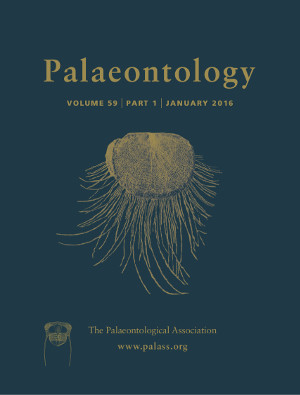Reg. Charity No. 1168330

The late Ediacaran siliciclastic successions of eastern Newfoundland, Canada, are renowned for their fossils of soft-bodied macro-organisms, which may include some of the earliest animals. Despite the potential importance of such fossils for evolutionary understanding, the taxonomic framework within which Ediacaran macrofossils are described is not clearly defined. Rangeomorphs from a newly discovered fossil surface on the Bonavista Peninsula, Newfoundland, require us to reconsider contemporary use of morphological characters to distinguish between genera and species within Ediacaran taxa. The new surface exhibits remarkable preservational fidelity, resolving features smaller than 0.1 mm in dimension in both frondose and non-frondose taxa. Such preservation permits the recognition of rarely observed fourth- and fifth-order rangeomorph branching, offering unparalleled opportunities to investigate the fine-scale construction of rangeomorph taxa including Culmofrons plumosa Laflamme et al., 2012. Our observations enable resolution of taxonomic issues relating to rangeomorphs, specifically overlap between the diagnoses of the frondose genera Beothukis Brasier and Antcliffe, 2009 and Culmofrons. We propose a taxonomic framework for all Ediacaran macrofossils whereby gross architecture, the presence/absence of discrete morphological characters and consideration of growth programme are used to distinguish genera, whereas morphometric or continuous characters define taxa at the species level. On the basis of its morphological characters, Culmofrons plumosa is herein synonymized to a species (Beothukis plumosa comb. nov.) within the genus Beothukis. This discussion emphasizes the need to standardize the taxonomic approach used to describe Ediacaran macrofossil taxa at both the genus and species levels, and raises important considerations for future formulation of higher-level taxonomic groups.